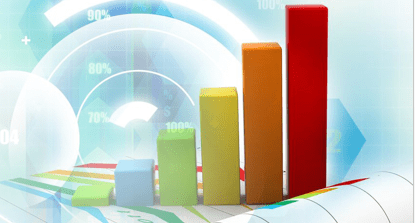All too often, when businesses are trying to improve their sales forecasting, reduce inventory holding, or simply improve availability and customer service, the first port of call is to review the forecast accuracy.
Many hours, large sums of money and a serious amount of hard work go into the black hole of improving forecasts; often in the form of experienced analysts, top of the range software, and staff training. After all of that, we often find that forecast fits have indeed improved significantly…..but so what?! Arguably more important than which forecast method, which system or who is in control of generating forecasts, is to understand HOW your business will use them and what level of review is relevant. Whilst an accurate forecast can provide significant benefits if managed correctly in line with other areas; it alone will not yield tangible benefits. Any assessment of forecast accuracy can only be done historically. For an assessment of how accurate a future forecast may be we must rely on the forecast fit.
For all future forecasts, the forecast fit is our anticipated forecast accuracy.
The forecast fit is a measure of how well the chosen forecast method ‘fits’ in line with the historic data set. When forecasting sales demand, the forecast fit measures how closely the forecast measures up to actual sales. Rather than focusing all efforts on improving forecasts, more tangible results will arise if the focus is on the desired outcome. Defining the result you wish to achieve, outlining how you will measure it, and most crucially, understanding what you need to do to better (or to stop doing) will allow you to unleash the power of any forecast improvements.
The below example, the supply chain of a simple black t-shirt, can demonstrate this more clearly.
- A high street retail sales business wants to increase stock availability and sales. In this retailer each end product (SKU) is bought and replenished in isolation.
- Each customer visiting the store wants a specific size, colour and style. In this example our customer wants a black, round neck, jersey t-shirt in a size small.
- When forecasting, the high street retailer must decide the level at which forecasts are created.
- Forecasting ‘t-shirts’ as a group may give a pleasing, stable forecast with a high level of forecast accuracy, but in practical terms that’s of little help to the end customer. Typically forecasts are disaggregated (or apportioned) to unique SKUs based on historical sales demand. A sudden swing in customer demand; a new colour trend in fashion for instance, could quickly render your SKU forecasts wildly inaccurate using this method.
- A forecast against ‘black t-shirts’ may give slightly better detail – but still, each customer will require a suitable size, and will have different tastes as per the style and cut. This secondary level, though more detailed could still lead to out of stocks and lost sales. Where retailers procure in ‘packs’ which give a range of sizes in each (for example 1-XS, 2-S, 3-M, 2-L, 1-XL), this level of forecasting may be sufficient.
- This retailer ultimately feels pressure at each unique sales item. Forecasting at SKU level will undoubtedly yield a lower overall forecast accuracy due to the increased volatility we will always find when reviewing granular data and may seem an unappealing option. However, in order to achieve the target of increased availability and sales, the retailer must be able to have a clear forecast for each SKU.
- Further up the supply chain, the manufacturer of the t-shirts will need a slightly different approach to forecasting and planning. The manufacturer too wishes to increase service to its customer (the high street retailer) through better stock availability.
- Whilst they will indeed ship variations of size, colour and style, which will ultimately relate to the end customer sales demand, the manufacturer’s forecast for production will need to be relevant to fabric quantities and dyes – their ‘raw materials’. Initial production will focus on getting the colour and fabric quality correct; with size and style of cut taking a less precedence.
- The pressure for the manufacturer here comes in ensuring they have the right supply of raw materials for their base product. Converting the base product (black, jersey fabric) into the many finished goods for sale (size small, round neck t-shirt) is impossible without a steady and reliable base forecast of the correct material.
- For the manufacturer, their forecasts make sense to be created and measured at the base product level. Getting their requirements of base product more accurate will allow better buying of raw materials to service the demand and drive improved availability of all finished sale items.
Both ends of the supply chain, whilst basing forecast information from the end customer sales demand, need to review, forecast and plan at different levels. The retail store and the manufacturer can group their data differently: managing the forecast as best suits their needs. Ultimately, getting the most from forecasting is reliant on truly understanding the ‘pinch points’ in your business.
- Where do you feel pressure?
- Where is the pain or complexity?
- Where are you constrained?
Understanding the problem areas in your supply chain will shape how you should best use forecasting and planning to help your business.



